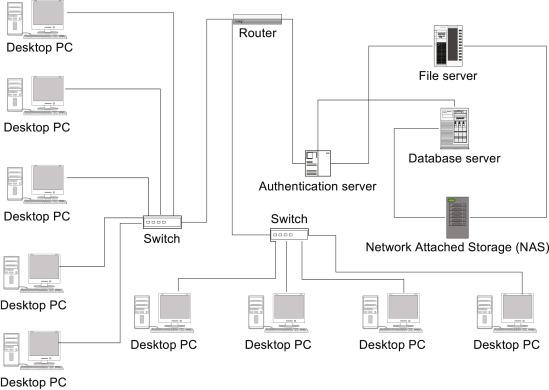From Figure 11.4, the mechanisms of the client/Server architecture is quite easy to understand. The software or application installed in a client machine (a PC or desktop or laptop computer) is the front end of the application. It manages local client resources, such as the monitor, keyboard, mouse, RAM, CPU, and other peripherals. If we replace it with a virtualized infrastructure, the remote virtual desk infrastructure (VDI), it will become a cloud VDI.
In comparison with mainframe terminals, the client is no longer a dumb machine. It has become a more powerful PC because it has its own computational environment. The client can be considered a customer who requests services. A server is similar to a service provider who serves many clients.
At the other side of client/server architecture is a server. The function of the server machine is to fulfill. all client requests. This means that the server-provided services can be shared among different clients. The server (or servers) is normally in a centralized location, namely a data center, but we also call it a server room or network room or LAN room or wiring closet or network storage room. It is really dependent on the size of the server fleet. The connection between clients and servers is via either a dedicated network or the Internet. Theoretically speaking, all servers are totally transparent to clients. The communication between client and server is based on standard protocols, such as Ethernet or TCP/IP. Once the clients initiate the service requests, the server will respond and execute these requests, such as data retrieval, updating, dispatching, storing, and deleting. Different servers can offer different services. A file server provides file system services, such as document, photo, music, and video files. A web server provides web content services. A storage server hosts storage services with different service levels, such as platinum, gold, silver, bronze, backup, and archive storage services. An application server supports application services, such as office applications or email. In addition, a server can also act as a software engine that manages shared resources such as databases, printers, network connectivity, or even the CPU. The main function of a server is to perform back-end tasks (see Figure 11.6).

Figure 11.6. Client/server relationship.
Among these different types of servers, the simplest server is the storage server. With a file server, such as an FTP (File Transfer Protocol) or SMB/CIFS (Server Message Block/Common Internet File System) or NFS (Network File System, Sun) server, a client may request a file or files over the Internet or LAN. It is dependent on the file size. If the size is very large, the client’s request needs a large amount of network bandwidth. This will drag the network speed down. Database, transaction, and applications servers are more sophisticated.
Since the 1980s, the number of hosting servers has been growing exponentially (see Figure 11.7). When ISC begun to survey host count in January 1993, the number of hosts was only 1,313,000; however in July 2013, the host count reached 996,230,757. It has increased almost 760 times, but the average hosting server’s utilization rate is much lower. Based on Gartner’s report in November 2008, the average utilization rate of x86 servers for most organizations was only between 7% and 15% [185]. Our experiences indicate that for some mobile content servers, the utilization rate is even below 1%. This has led to server consolidation by leveraging dramatic improvement from virtualization technology. In essence, Internet technology and service sparked the acceleration of host server growth and growing server volume has triggered server virtualization, which lays the basic infrastructure foundation for a cloud.
Figure 11.7. Internet domain hosts [184].
Now that we have clarified the concepts of client, server, and client/server architecture, in the following sections, we will take a close look at both x86 and RISC servers.
PREV: WAS 6 PD